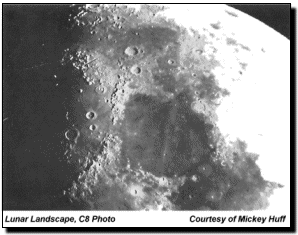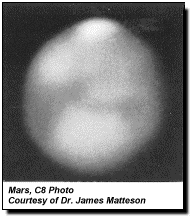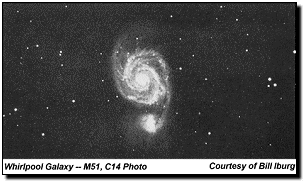|
INTRODUCTION
Astronomy is a fascinating lifetime hobby enjoyed by
young children to centenarians, by people from all walks of life and with varied
interests.
You can observe or photograph the heavens on a casual
or serious basis, undertake scientific study or marvel at the wonderment of our
existence. Astronomy can be a fun and relaxing way to soothe our minds and
bodies from our hectic everyday life. It is a way to enjoy nature, being outside
and marveling at the night sky.
Astronomy is fun and easy to learn! You don't have to
be a scholar in physics or math to enjoy our universe. Besides binoculars or a
telescope you will need star maps or books listing the location of various
objects in the sky. Now even computerized telescopes are available making it
very easy to observe numerous objects in an evening. Much useful information for
all levels of interest is available from amateur astronomy clubs, college
astronomy professors, libraries, planetariums, telescope dealers and other
hobbyists.
A basic understanding of telescope and astronomical
terminology is useful and this book briefly covers some of the items that will
be helpful to get you started.

WHAT YOU CAN SEE WITH A TELESCOPE
Some of the types of celestial objects
you can view are:
THE MOON--Prepare for an awesome spectacle. The
moon's disk has a pastel-cream and gray background, streamers of material from
impact craters stretch halfway across the lunar surface, river-like rilles wind
for hundreds of miles, numerous mountain ranges and craters are available for
inspection. At low or high power the moon is continually changing as it goes
through its phases. Occasionally you will be treated to a lunar
eclipse.
THE SUN --
It is quite safe to view the Sun if you utilize a
proper solar filter. The Sun is fascinating to inspect as you detect and watch
the ever-changing sunspot activity. If you are fortunate enough, and are willing
to travel to remote locations, you may at some point experience a solar
eclipse.
THE PLANETS -- Observation of planets will keep you very busy. You can see
Jupiter with its great red spot change hourly, study the cloud bands and watch
its moons shuttle back and forth. Study Saturn and its splendid ring structure,
watch Venus and Mercury as they go through their moon-like phases. Observe Mars
and see its polar cap changes or watch the dust storms and deserts bloom with
life. Uranus, Neptune and Pluto can be seen easily with 8" or larger
telescopes.
STAR CLUSTERS --
There are two types of star clusters- (1) open
star clusters (also called galactic clusters) which are loosely arranged groups
of stars, occasionally not too distinctive from the background stars, and (2)
globular star clusters which are tightly packed groups of many millions of
stars.
NEBULAE --
These are glowing clouds of gas falling into two
types- (1) planetary nebulae which are relatively small ball-shaped clouds of
expanding gases and are believed to be the remnants of stellar explosions, and
(2) diffuse nebulae which are vast, irregularly-shaped clouds of gas and
dust.
GALAXIES-- These are vast, remote "island universes," each composed of many
billions of stars. Galaxies exist in a variety of sizes with regular and
irregular shapes.
COMETS --
Magnificent comets are routinely visible through
telescopes.
DOUBLE (BINARY) STARS -- These are pairs of stars orbiting
around a common center of gravity, often of different and contrasting
colors.
What you can see is dependent on a lot of factors.
The most important of these for astronomy is aperture. Other important factors
are optical quality, steadiness of your tripod and mount, seeing conditions,
your location (city or rural), brightness of the object and your experience. You
won't be able to see the American flag on the surface of the moon or black
holes. You won't see as much color as you see in astrophotographs (photos of
celestial objects) because these utilize long exposure times which allow the
light and color to build up on the film.
Most telescopes can be used to see things on the
Earth. You can use them for long distance terrestrial viewing, nature study,
sports action, surveillance or general land usage. You can also easily
photograph terrestrial objects since a telescope can be used as a long telephoto
lens by attaching the body only of a 35mm SLR camera. Our T-Ring and T-Adapter
accessories are also required.
Astrophotography is also a rich and rewarding
experience. With many telescopes it is relatively easy, but takes patience and
experience to produce excellent results. Taking your own astrophotographs is a
thrill as you can share the results with others.
CCD IMAGING -- The last few years have brought to the amateur astronomer a large
assortment of CCD (Charge Coupled Device) cameras. Electronic imaging opens up a
whole new vista for amateur astronomers who can obtain images quickly and from
urban locations.

|


